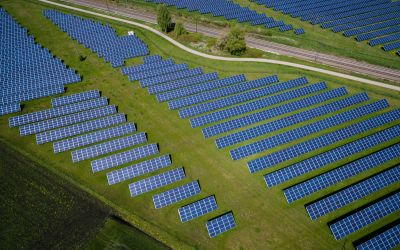Six essentials for mainstream EV adoption
We’re nearing the point of no return in the eMobility transition. EVs could make up 55% of total global vehicle sales by 2030. But failure to address six essentials could result in missed climate targets, wasted investment and a delayed transition timetable, warns Serge Colle, EY Global Energy and Resources Leader.

We’re nearing the point of no return in the eMobility transition. EVs could make up 55% of total global vehicle sales by 2030. But failure to address six essentials could result in missed climate targets, wasted investment and a delayed transition timetable, warns Serge Colle, EY Global Energy and Resources Leader.
If we’re to avoid hitting the curb, industry participants must work together and get the essentials for mainstream EV adoption right.
1. A resilient supply chain
Inflation hit the EV segment hard, with rising mineral prices threatening to slow the fall in battery costs. In the short term, at least, the cost of building EVs is going up, widening the gap with internal combustion engine (ICE) vehicles.
In response, European and US automakers are investing in the upstream battery market and along the battery value chain. Gigafactory developments will meet future local demand and reduce dependency on producing nations. It is a long-term commitment but critical to the ongoing availability of affordable vehicles.
2. Clean and green power
EVs stand to become the biggest consumers of clean and green power. But currently, just over 3% of the transport sector runs on renewable energy.
An accelerated transition to cleaner and lower-carbon generation is needed to decarbonize the grid, improve local energy security, reduce costs to consumers and meet anticipated EV demand.
3. Accessible charging infrastructure
The fast and efficient rollout of a public network of fast chargers hinges on the removal of regulatory barriers, improved access to land for infrastructure and the faster passage via local authority permitting channels.
Ultimately, however, utilities must deliver more timely grid connections. And infrastructure must be equitably distributed where people live and work.
4. A smart grid
Once EV stock exceeds 20% of electricity demand, the need for grid upgrades becomes significant. The solution is to integrate EVs with smart grid technologies to better manage energy demand and lessen the risk of overloading transformers or transmission lines.
Forecasts for EV integration will help utilities to estimate the impact of future loads. Coordinated grid expansion plans, and digital technologies for two-way EV-to-grid communications and pricing, will further support integration.
5. Digitization
Millions of EVs will generate masses of data. Issues around data storage, ownership, usage and regulation must be resolved to allow for enhanced eMobility services and monetization.
Once converted into a digital format, data allows EV drivers to benefit from interoperability. The ability to connect wirelessly, roam and pay to charge builds customer advocacy. However, greater interoperability depends on open connected platforms for data sharing, fair and transparent data access, and harmonized protocols. And for that, the ecosystem of players must put aside competition in the interests of the common objective.
6. Skilled labor
The transition to EVs is forecast to create more jobs than it displaces. However, the skills needed for EV manufacture are significantly different to those necessary for ICE. Failure to provide adequate training, and to attract and retain staff, will impact production lines and EV availability.
On the road to an all-EV lineup, many automakers are committing to safeguard jobs and upskill staff, and some are teaming with technology partners, education bodies and learning platforms to create tailored training pathways. In addition, governments must invest in apprenticeships and recognized qualifications.
Collaborate to make eMobility work
As EVs move into the mainstream, we begin the forensic exploration of how to make eMobility actually work. That involves everyone collaborating and pulling in the same direction.
We see regulators, utilities and charge point operators (CPOs) working together so that residents in apartment blocks who want to charge can do so. And we see cities working with utilities and CPOs to inform local policy decisions on the electrification of passenger and commercial fleets. Now, these local-level responses must be replicated across the wider eMobility landscape so that the EV transition works for everyone.
Discover more at https://www.ey.com/en_gl/energy-resources/six-essentials-for-mainstream-ev-adoption.
The views reflected in this article are the views of the author and do not necessarily reflect the views of the global EY organization or its member firms.






